Support Requirement in Japan_Recent Relaxed Criteria

Support Requirement in Japan:
- Description Requirements in Japan
- Support Requirement in Japan
- Determination Criteria
- Transition of Judgment Standard
- “Pyrimidine Derivatives” IP High Court Case
- Related Topics
- Summary
1. Description Requirements in Japan
“Description Requirements” in Japan include: (i) enablement requirement; (ii) support requirement; and (iii) clarity requirement.
2. Support Requirement in Japan
[Patent Law Art. 36(6)(i)]
The recitations of claims shall comply with … the invention for which a patent is sought is disclosed in the detailed description of the invention
[Examination Guidelines]
Examine whether the claimed invention exceeds “the extent of disclosure in the description to which a person skilled in the art would recognize that a problem to be solved by the invention would be actually solved”
[Four Types of Violations of Support Requirement]
- No statement or implication of claimed elements in the description;
- Unclear correspondence between the claimed invention and the statement in the description;
- Over-expanded or over-generalized invention claimed; and
- No recitation of elements necessary for the solution of the problem to be solved.
3. Determination Criteria
When considering the Support Requirement, it is important how the “Problem” to be solved by the invention is determined.
There are two criteria for determining the “Problem”:
- Generic Concept; and
- Specific Concept.
If the generic concept is applied, the “Problem” is determined abstractly. If the specific concept is applied, the “Problem” is determined concretely.
The determination of the “Problem” also affects judgments regarding inventive step.
If the “Problem” is determined abstractly, the support requirement is likely to be satisfied. That is, if the claimed invention is recognized to solve the abstract “Problem”, at a lower level, the support requirement is likely to be satisfied. On the other hand, if the “Problem” is determined concretely, inventive step is likely to be satisfied. That is, if the claimed invention is recognized to solve the concrete “Problem”, at a higher level, inventive step is likely to be affirmed.
4. Transition of Judgment Standard
The judgment standard for the “Problem” has changed.
Before 2015, the generic concept was applied and the support requirement was more easily recognized as being satisfied.
Between 2015 and 2017, the specific concept was applied and the support requirement was strictly judged. There were many court decisions, in which the support requirements were not recognized as being satisfied.
However, after the “Pyrimidine Derivatives” case, which is an IP High Court Decision, the generic concept has been applied again.
5. “Pyrimidine Derivatives” Case
- Grand Panel of IP High Court
- Judgment: April 13, 2018
- Case No.: 2016 (Gyo-Ke) 10182
- Patent at issue: JP 2648897 (corresponding to US 5260440)
- Main Issues:
- Legal Interest
- Inventive Step
- Support Requirement
Inventive Step?:
Claimed invention should achieve significant effects over the prior art?
Support Requirement?:
“Problem” should be determined with the same criteria?
Court Ruled:
- Determination of Inventive Step should NOT be encompassed into the framework of determination of whether the Support Requirement is satisfied
- Even if the activity of a new ingredient is at the same level as that of a commercially available ingredient, the new ingredient has a technical value in that it provides an alternative means for solution
- “Problem” to be solved by the invention should be to provide a compound having an activity to the extent that the compound may become a pharmaceutical product
- “Problem” is determined abstractly: Generic Concept
- The description discloses to the extent that allows a person ordinarily skilled in the art to recognize that the claimed compound can solve the problem to be solved by the invention
- Support Requirement is satisfied
6. Related Topics
- Should the “problem” be solved in the whole range of a numerical limitation?
- Are both upper/lower limits required?
- Is recitation of the “problem” in claims effective?
7. Summary
- Recent Trend
- Relaxed Criteria for Support Requirement
- Strategy for Patentee (Applicant)
- Do not specifically contend the “problem” more than necessary
- Strategy for Opponent (Invalidation Trial Demandant)
- Specify the “problem” through Inventive Step argument
- Negate Support Requirement in terms of the specific “problem”
We hope the above comments will be clear to you. Should you have any further questions, please do not hesitate to contact us at info@allegropat.com
More To Explore

AIPPI World Congress | Yokohama 13-16 September
2025 AIPPI World Congress

Restriction of Multiple-Multiple Dependent Claims [Update on March 9, 2025]
Overview: For application

